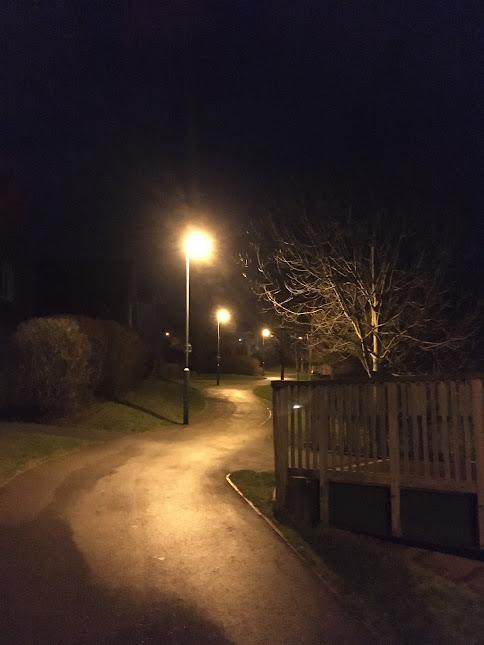This Week’s Bit of String: A seating plan reshuffle
You know it’s time to amend the classroom seating plan when sitting through an English exam practice question results in two students pelting empty drinks bottles at each other, clipping a staff member’s ear, and unabashedly informing the teacher they’ll f each other up as soon as the bell sounds.
In this case, the teacher begrudgingly typed up an incident report but tried to make me write the new seating chart in my unpaid after-school time.
“Make sure students a, b, c, d, e, f, g, h, and i are nowhere near the windows,” she ordered. There are 3 window seats. There are 15 kids in the class.
She wanted at least 6 of them right in the front, but no one next to each other. Consign to some unreachable corner the special needs ones I’m there to support. “It’s a shame,” she said. “Most of them have been working well enough, but we’ll have to move everyone around in order to be fair.”
Rewriting a short story the following weekend felt like staring at the paper on which I was meant to draw up a new seating plan. Where to even start? So much I like, must I really chop and change the whole thing?
Outnumbered
For years since I first worked in the local secondary school, whenever I have to do something hard I have a recurring image in my mind. A dark-eyed little Year 8 slumped over basic arithmetic problems, throwing his head back and groaning, “This is so looooong!”
Long is a big insult from a student. Long is NEVER permissible to them.

So it is with rewriting, in more ways than one. It takes a really long time, and I’d forgotten that because it’s been several months since I was free to sit down and fully overhaul a project. You think creating, yanking plot and character and language out of thin air, is the hardest bit. It should be quicker tidying things up, but it’s not.
It took hours of painstaking line-by-line work to shrink the word count by 40%, and that’s only the first go. Just as we make our Year 11s do more than one practice paper before exams, it’s going to take multiple versions before I get this story right.
The piece I’m working on is told by a mother of young kids. She has a terrible back injury and her husband’s disappeared. It’s funner than it sounds, because the kids are cute and the woman has a wry sense of humour. However, as with many tales, I have to balance out pain and hope, despair and wit.
Seating Plans Versus Story Drafts
There are a few similarities between helping run a classroom and pulling together a narrative.
No aimless gazing out the window: We want focus in the classroom (easier said than done) and definitely in a story. Every word and exchange should be trained toward the story’s purpose. No diddly passive verbs or excess prepositional phrases, no meandering side glances or navel-gazing either.
Long = Bad: This isn’t always true of course, but we don’t want anyone to feel something’s a slog. We give students various quick tasks to build different skills, and likewise with a story we can vary the tempo. Once I’ve made a major round of cuts, I look at the shape of the paragraphs on the page—are there too many rapid-fire dialogue lines, or excessively dense thickets of description? Where possible, I distribute these and alternate them.
Don’t forget the back row: The first page is like the classroom front row: curated with special care to set the tone. Because so much expectation rests on those initial words, I go over the beginning loads of times. But I also work backwards at some point, line-editing in reverse so my scalpel is sharp at the end for this round of cuts, rather than always sharpest at the beginning.

Maintaining balance: Move over Hamlet, the REAL question in life is do we lump the bad together so we get bigger swathes of good, or try to pace it out? In schools we often inflict a beastly child upon a lovely one in a seating plan. Otherwise the “bad” kids sit next to each other and form a whole beastly herd in Row 3. As a writer, I don’t want to present readers with unrelenting woe (I mean I’m not Thomas Hardy), so I emphasise warm relationships where possible and sprinkle humour throughout.
Make space for addition: When deep-diving into a rewrite, the immersion lasts beyond the hours of Post-It rearranging, pen slashing, and sitting at my laptop. I’ve reentered the world of my story and it takes a while to find the exit. In my dreams, on my walks, while I’m cooking dinner, I think of things I want to add. Parallels to be drawn more clearly perhaps, quick descriptors to enhance the mood.
Not ideal when trying to reduce word count to meet a competition’s maximum requirements. It’s like unleashing a kid fresh from the Internal Exclusion Room into a previously settled classroom. Will this knock everything off balance? But newcomers, whether people or words, deserve a chance.
Above all, when I’m editing I just wish someone could give me the answers. Does this go here? Am I allowed to keep this? Is something more needed there? I lucked out with the seating plan at school, because the other teaching assistant and I convinced the teacher it wasn’t our job to do it, and that little was required anyway. “You can keep most of the students where they are. It’s not as if it’s a secret why we have to move two or three of them.”
What are your tips for rewriting? Do you enjoy the process or do you find it… long?